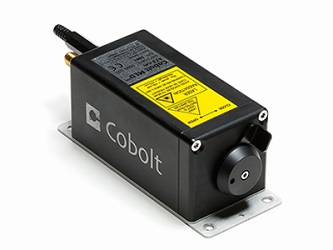Azimuth Photonics presents great variety of laser models by Cobolt, PicoQuant, Daylight Solutions, Litron Lasers, PD-LD and Omicron-Laserage. We will help you to choose the best solution for your application among CW and Q-switched lasers in the UV-Visible-NIR spectral range.
Azimuth Photonics presents great variety of laser models by Cobolt, PicoQuant, Daylight Solutions, Litron Lasers, PD-LD and Omicron-Laserage. We will help you to choose the best solution for your application among CW and Q-switched lasers in the UV-Visible-NIR spectral range.
DPSS lasers
Our suppliers manufecture ultra low noise, CW, single mode solid-state lasers in the UV-Visible-NIR spectral range; Q-switched DPSS lasers with the unique combination of high pulse rates and high pulse energy in the UV-NIR range; as well as tunable mid-IR sources.
Diode lasers
Modulated and CW high-stability lasers by Omicron-Laserage cover wide spectral range between 375 nm and 1060 nm. PicoQuant's compact and reliable turn-key diode laser solutions work in picosecond pulsed, modulated, or fast-switched (nsec to µsec) operation mode. The laser systems typically consist of a common driver unit and exchangeable heads. Lasers cover discrete wavelengths from 245 nm to 1990 nm or are tunable in the VIS. Power levels vary between µW and hundreds of mW for the most powerful, fibre amplified versions.
Quantum Cascade Lasers
Quantum cascade lasers (QCLs) by Daylight Solutions are semiconductor lasers which utilize epitaxially grown quantum wells that contain electrons in lasing states. The optical physics of a QCL differ from that of a diode laser. In a QCL the lasing transition occurs between states within a given quantum well. In contrast, in a diode laser transitions occur between the conduction band and valence band of the semiconductor material. One advantage of this construction is that the electron responsible for the emission of the photon tunnels into the next quantum well and as a result, multiple photons can be generated by a single electron, thereby making them extremely efficient. The tunneling from one well to the next is where the term “quantum cascade” comes from. Furthermore, the well depths can be engineered by controlling layer depths during the fabrication process and hence the wavelength of the lasing transition is dependent on the physical structure of the device. By carefully designing the quantum wells, lasing has been achieved at wavelengths as short as 2.75 µm and as long as 161 µm (1.9 THz).
We also deliver compact, high energy Nd:YAG lasers by Litron Lasers, innovative VBG lasers by PD-LD and wide range of accessories for lasers.

